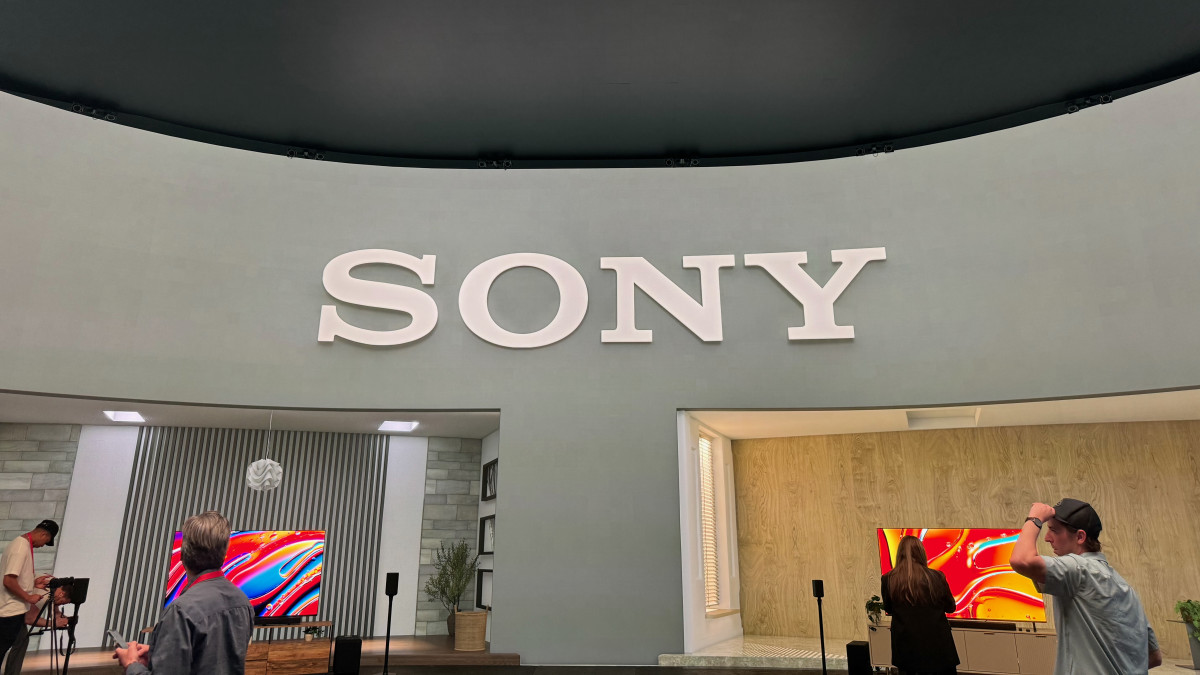
Fast Facts
- TheStreet's Jacob Krol got to preview Sony's brand-new 2024 Bravia TV and home audio — soundbars, speakers, and wearables — at an event at the Sony Pictures Lot.
- Like in past years, Sony isn't taking a one-size-fits-all approach for TVs or home audio.
Sony (SNEJF) is finally ready to talk about its 2024 home entertainment products — TVs and home audio like soundbars and speakers — and it was worth the wait. The technology giant has long packed a punch with impressive visuals on TVs, room-filling sound from traditional soundbars, and unique home audio devices.
The most exciting part of the lineup is the $3,999.99 starting Bravia 9 — a mini LED TV with 325% more dimming zones powered by a leap forward in smaller mini LEDs to create more immersive visuals. It impressed in an early hands-on and is likely the mini LED TV to beat in 2024. It has a modern, sleek-looking build with innovatively designed tweeters within the frame for better spatial sound placement.
Related: Sony’s 2024 Bravia 9 is the Mini LED TV to beat
Sony also offered the more affordable Mini LED-powered Bravia 7, which has fewer zones but still offers a compelling picture and a lighter wallet load, as well as the entry-level, simply LED-powered Bravia 3.
OLED is still in the mix, with 2023’s excellent A95L QD-OLED becoming the Bravia 8. It still produces one of the best pictures possible with ultra-deep blacks and contrast points, as well as bright pops of color. Sony clearly sticks with a multi-prong approach regarding which TVs work best for you; it’s not that OLED is better or that Mini LED is better. It’s about finding the best picture for you, something other brands like Samsung also embrace.
Sony Bravia TVs: First Look
Bravia 9
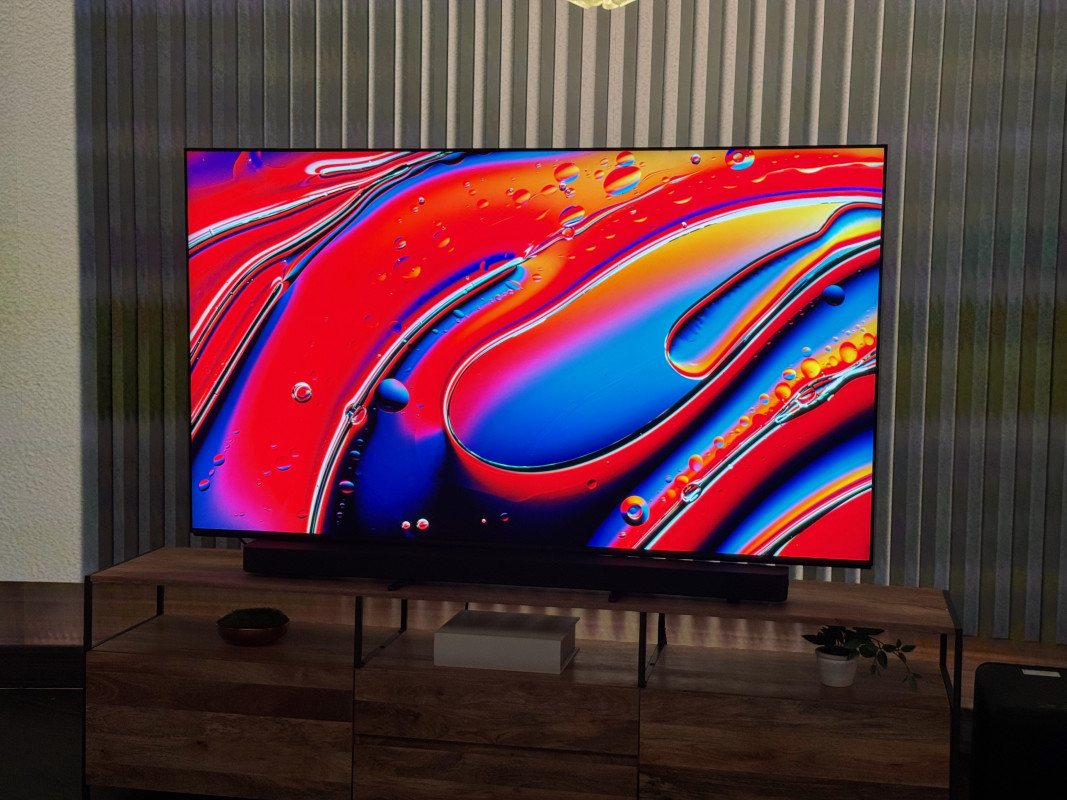
The Bravia 9 is available in three sizes—65, 75, and 85 inches—and is designed to be the center of your home theater setup. It’s up to 50% brighter than 2023’s X95L from Sony and boasts up to 325 more dimming zones, all packed with the world’s smallest LED driver and smaller mini LEDs. More zones mean more mini LEDs, equating to more control when creating a visual.
The Bravia 8 can reproduce a more accurate image thanks to more control of the brightness of mini LEDs on a 22-bit scale and can better place that brightness. Like an individual pixel on an OLED TV, you can have a mini LED running super bright next to one completely off or vice versa. It was really compelling in our demo, and you can see our deep-dive first look here.
Sony also delivered better viewing angles to ensure that the visuals don’t look skewed from extreme side views, and it boasts an excellent Google TV interface out of the box. A new energy-saving panel will also likely highlight how the Bravia 9 can use less power. Baked into the side frames of the Bravia 9 in all sizes are side tweeters and new beam tweeters, which should deliver a more compelling audio experience out of the box.
Bravia 8
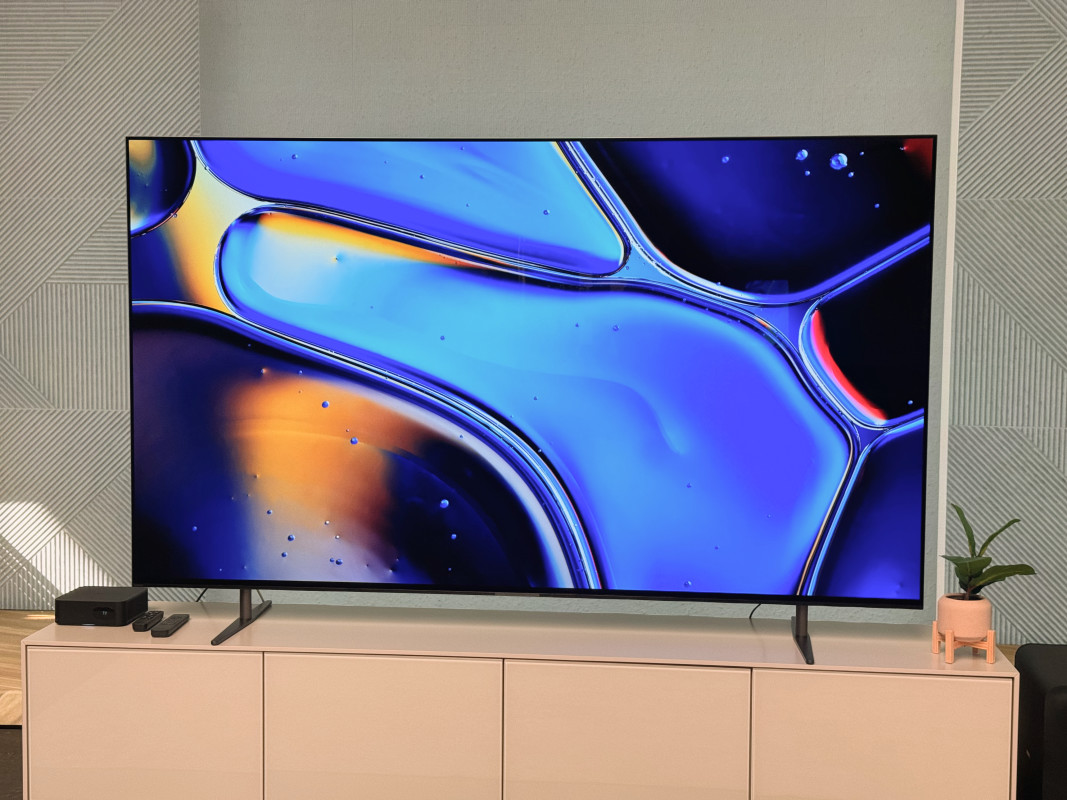
Jacob Krol/TheStreet
As part of an easier naming scheme for its TVs, 2023’s A95L Qunatom Dot OLED will stay in the new lineup as the Bravia 8, landing at 55, 65, and 77 inches. It still delivers vibrant pops of color along with extremely stark contrast points and does that with over 8 million self-powered pixels. If you have great control over artificial and environmental light in your space, the Bravia 8 is a great option as it delivers a compelling image.
It’s also coupled with some smart interface enhancements like the rest of the lineup, including Voize Zoom 3, which can process whatever you’re watching in real time and let you instantly enhance or lower dialogue to either five below or above the base. It’s quite impressive. The main audio of the Bravia 8, thanks to its ultra-thin design, comes from an actuator built into the TV under the Acoustic Surface Audio+ branding.
Bravia 7
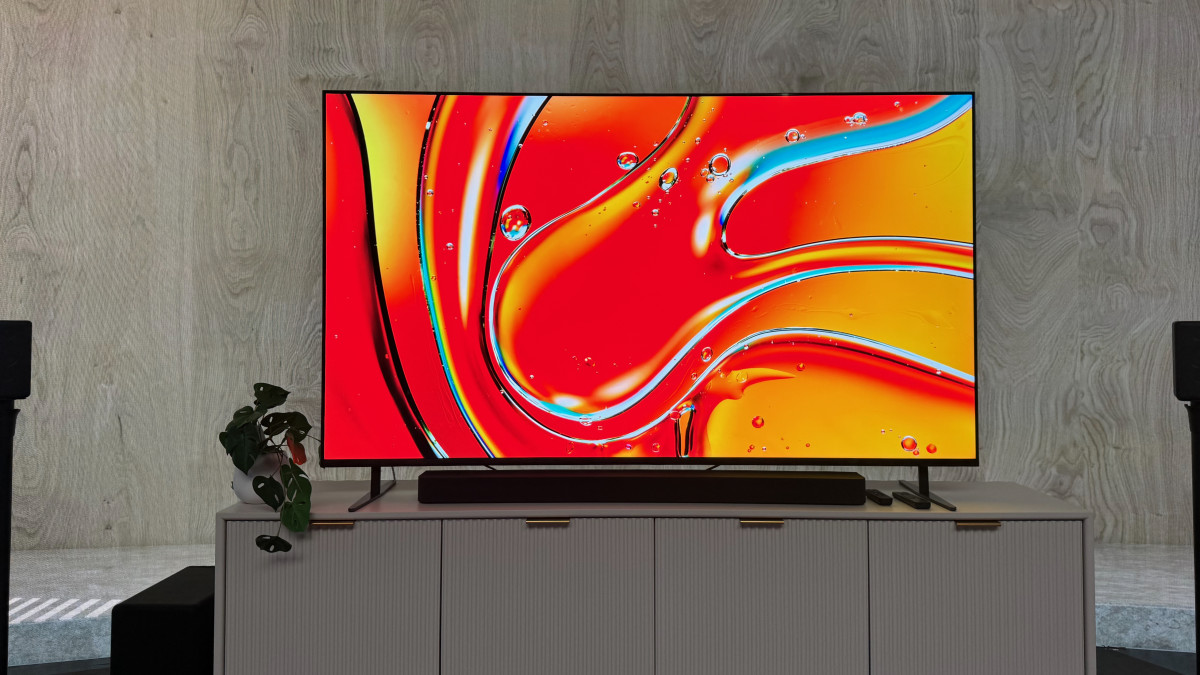
Jacob Krol/TheStreet
The Bravia 7 is essentially the middle of Sony’s new lineup and still does a commendable job on the mission of bringing cinema home. It will be available in a broader range of sizes, including 55-, 65-, 75-, and 85-inches, and starts more affordably at $1,899.99. More critically, it’s still Mini LED powered, and when viewed head-on, it delivers a great picture that boasts 22-bit control.
Year over year, it offers up to eight times the dimming zones from the X90L and gets up to a 33% brightness boost. Compared to competing TVs like Samsung QN85C, it performed well in some side-by-side demo tests, resulting in less blooming with brighter, vibrant colors and ultimately showing more of a full scene since it has better control and gradation capabilities.
Compared to the Bravia 9, it doesn’t get as bright, and you’ll still see blooming at times — it also doesn’t boast the anti-reflection coating, which means some visuals will skew on extreme left or right. Still, the Bravia 7 delivers a mini LED experience with improved control for most people and doesn't break the bank nearly as much.
Bravia 3
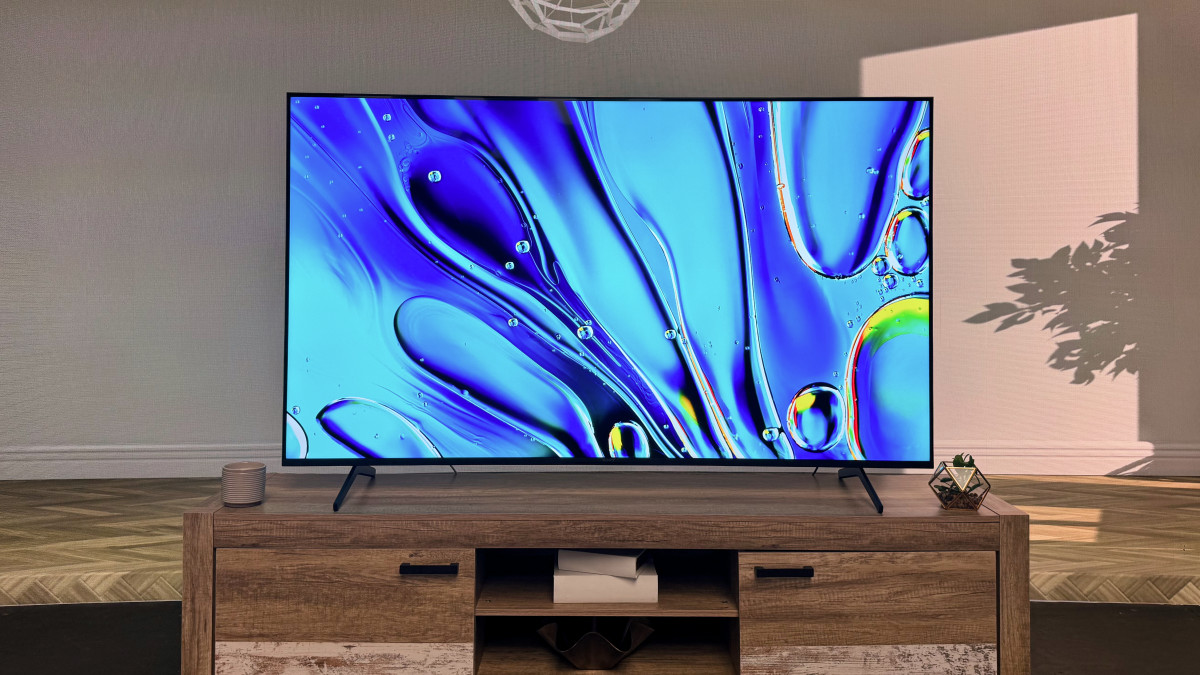
Jacob Krol/TheStreet
Sony’s entry-point for TVs this year is the Bravia 3, and while it lacks mini LED, it still boasts the brand's processing techniques for this LED screen. It boasts up to a 4K resolution and will handle upscaling content like the Bravia 7, 8, or 9. It’s powered by a slightly different processor — the 4K HDR Processor X1 — and boasts Triluminios Pro colors. Still, it also has the same excellent interface for easy access to major streaming services. It also integrates with all the major smart home standards — Apple, Google, and Amazon — for easy control.
It’s also the most affordable, with a starting price of $699.99 for the 50-inch size and a price increase to $1,799.99 for the 85-inch model.
Related: Here’s what Sony's Mini LED prototype means for the future of TVs
Sony Bravia Home Audio: First Look
Sure, Sony just launched its Ult audio brand with a focus on bold sound, but Bravia is now home to the brand's home audio products designed for the living room. And for 2024, it’s a tale of four distinct products — two soundbars, a four-speaker setup, and a wearable neckband.
Bravia Theater U
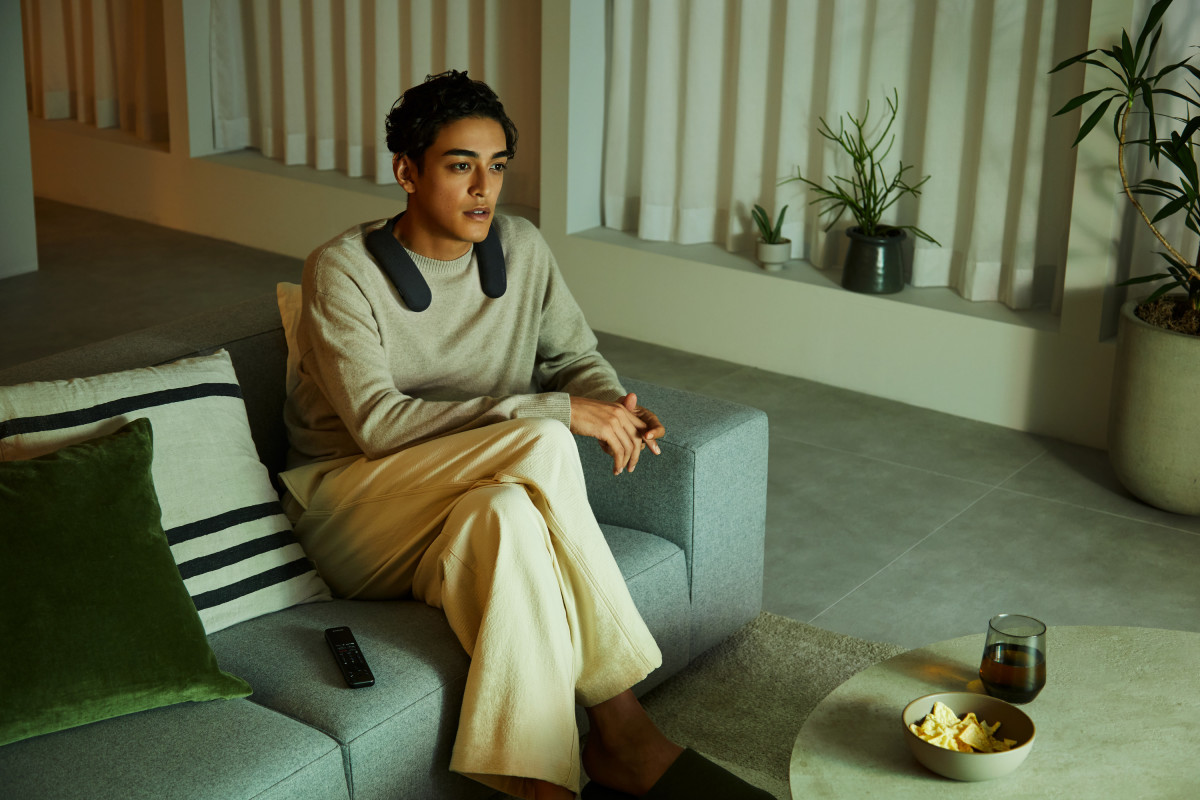
Sony
The most interesting is the Bravia Theater U, a speaker designed to be worn around your neck. It’s not closed-ear or passive like earbuds but rather delivers a more compelling audio experience directly for your ears — though folks around you will hear due to audio bleeding.
In my demo, I listened to a clip from a film and used it for gaming on a PS5—it’s basically zero-latency, ensuring a smooth experience. The X balance speaker uses 360-projection sound to ensure a wide soundstage and a strong lower-end. My demo was mostly left and right, with a strong lower-end on either side, but the dialogue was very clear.
The Bravia Theater U will be available soon for $299.99 and is the unique part of the lineup, designed for folks who want compelling sound but also to still interact with folks around them.
Bravia Theater Quad
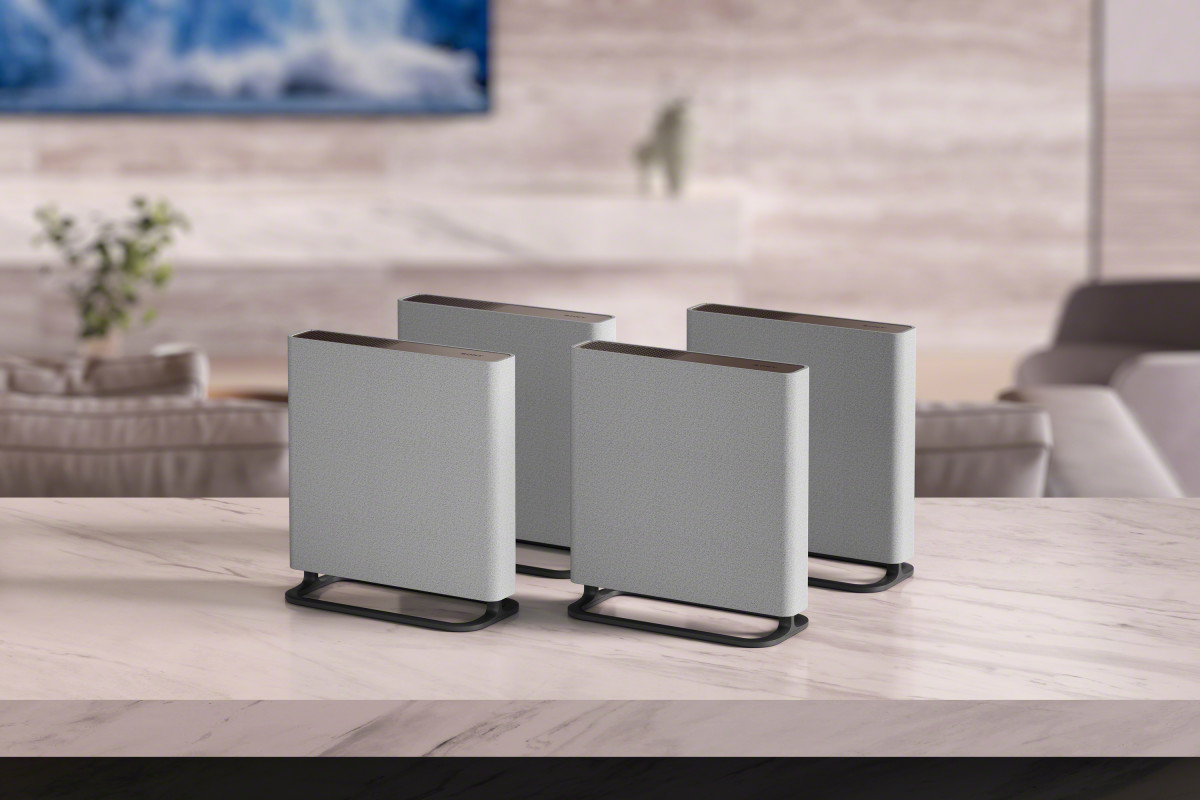
Sony
Unlike the Bravia Bar 9 or 8, the Theater Quad is a four-speaker setup designed to place you in the center of the mix. Each Theater Quad speaker—four of them in a set for $2,499.99—contains four speakers to tackle low, mid, and high range, including up-firing at the top. Two can be next to the TV in the front and two behind you for an ideal setup. It will work with the speakers already there when paired with a Sony TV.
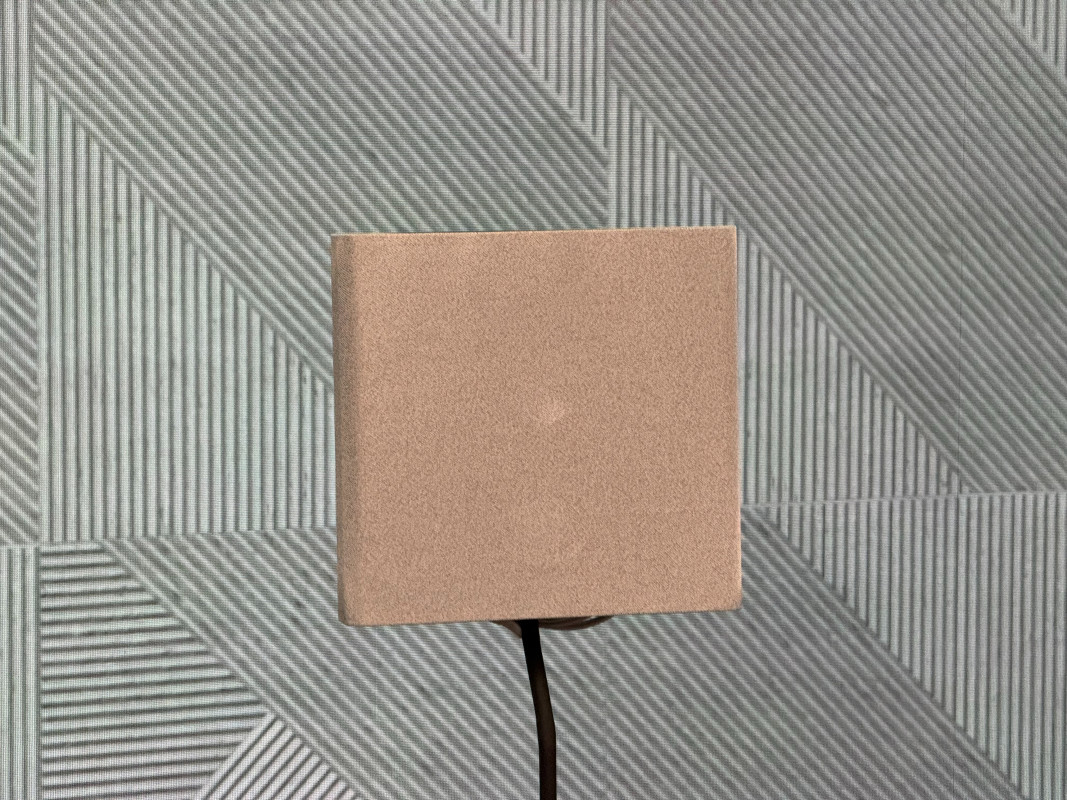
Spatially, it was really impressive demo that offered an extremely wide soundstage and a good representation of every top of the mix. With "Top Gun Maverick" playing, it felt like you were in the middle of the action with surprisingly great bass.
The Bravia Theater Quad isn’t cheap, but it is a way to get a design-first home audio setup that can be used with the TV and for music separately. It uses four speakers for a 16-channel audio experience.
Bravia Bar 9 and Bar 8
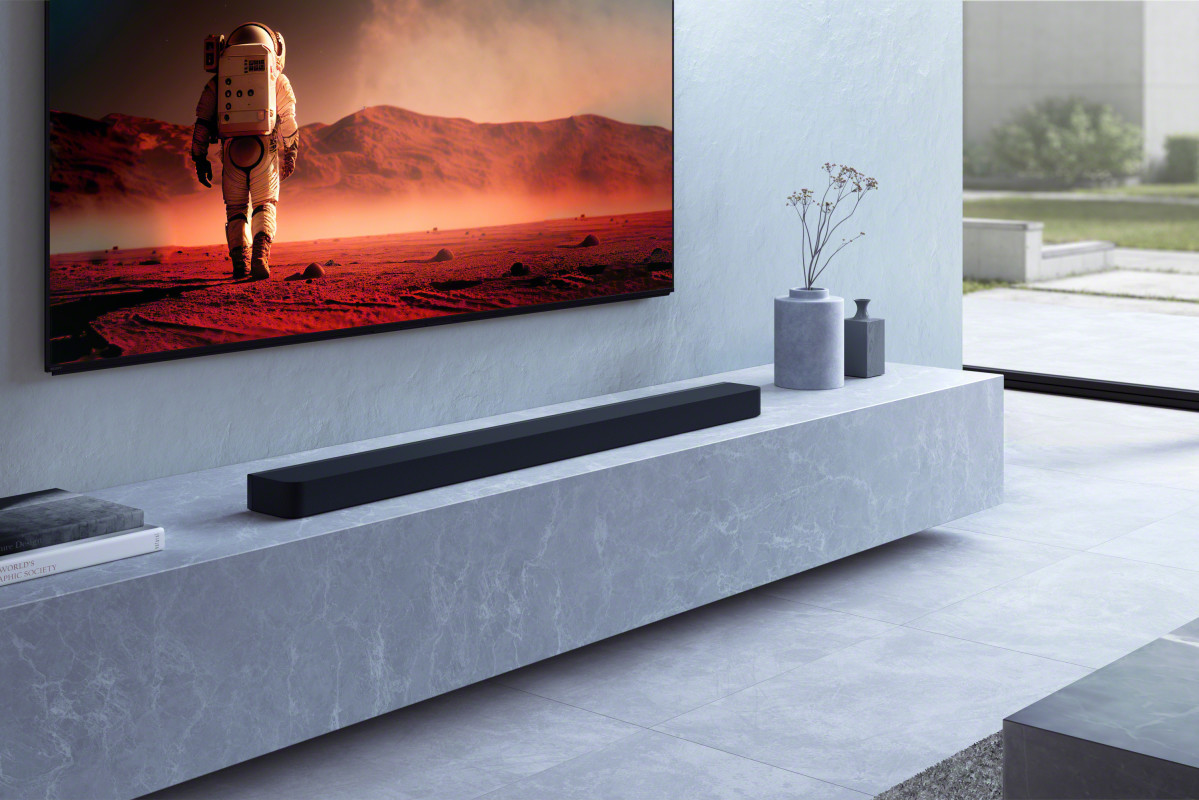
Sony
As the name hints, the Bravia Bar 9 is a 13-speaker soundbar and is more affordable than the wireless Theater Quad at $1,399.99. I also got a brief demo of this, and it certainly brings a thundering storm of sound with support for Dolby Atmos and DTS: X. Like the other Bravia Audio products, it can integrate with a Sony TV for an even louder audio experience, and it looked great under the Bravia 9 in this demo.
You get the bar, two tweeters, and a subwoofer for a full audio experience, and thanks to spatial sound mapping, you can optimize it for your specific space. The Bar 9 itself features built-in front, side, and up-firing speakers.
The Bar 8 is both the most affordable and probably easiest to install as it’s the smallest. At $999.99, it boasts 11 speakers and can easily fit under a 50-inch or 85-inch TV. It’s replacing the A5000, and while it doesn’t come with additional speakers or a sub, it does work with what Sony has on the market already.
Related: Veteran fund manager picks favorite stocks for 2024
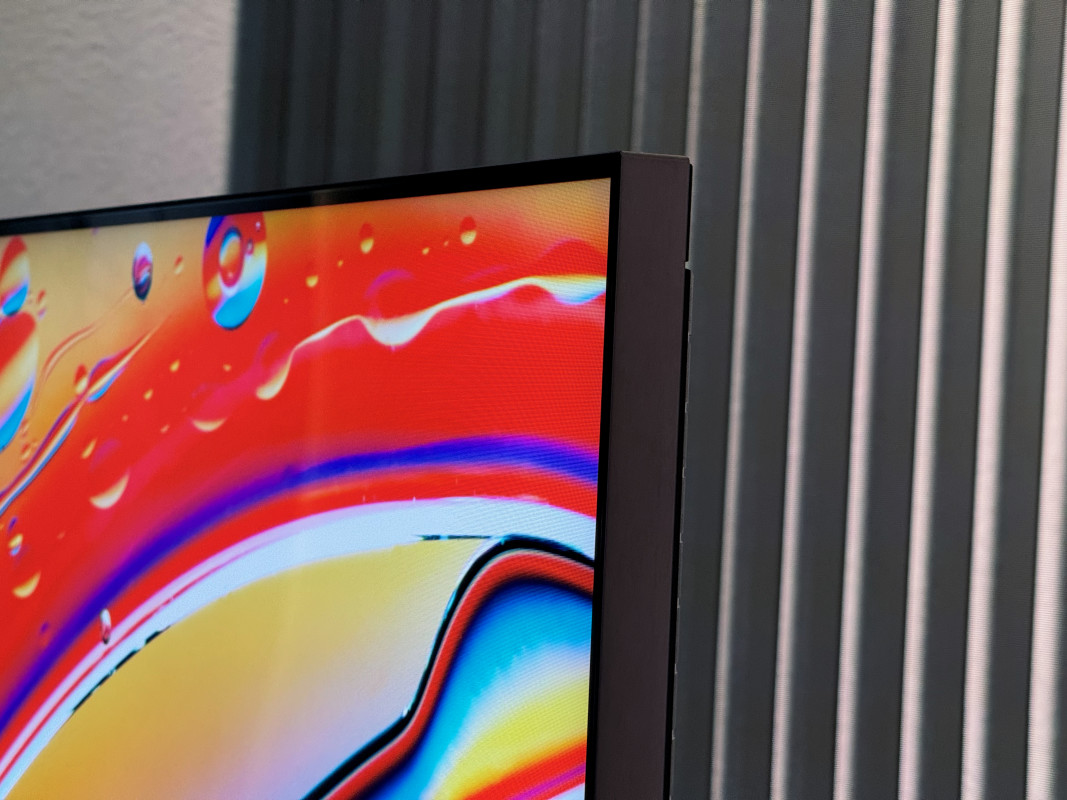
Jacob Krol/TheStreet







